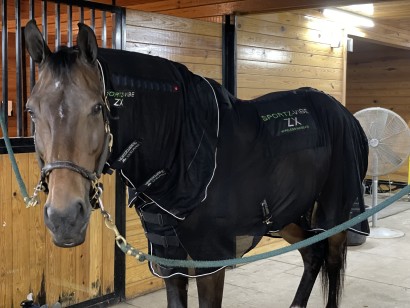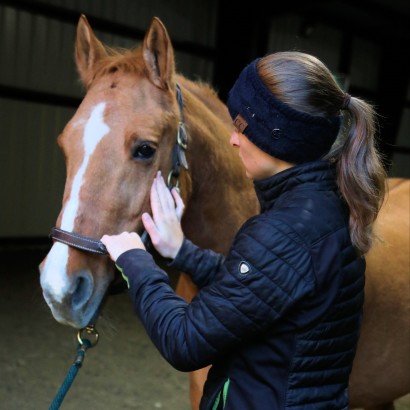Massage Therapy for Horses
Updated March 29, 2024 | By: Andris J. Kaneps, DVM, PhD, DACVS, DACVSR

As anyone who has ever had a professional massage knows, a bit of elbow grease in just the right spots can work some serious magic. Massage is one of the oldest known holistic therapies and has proven its worth through many physical and mental benefits.
Massage relieves muscle tightness and promotes healthy functioning of the lymphatic system by moving excess fluids along their pathways and improving blood flow. Lactic acid and metabolic waste products are encouraged out of the muscle tissues while they are nourished with oxygen and vital nutrients.
A trained massage therapist can give you hints regarding your horse’s body condition and comfort. The therapist is trained to identify levels of muscle or joint stiffness that the untrained person often can’t perceive.
How Massage Helps the Horse’s Body

Massage isn’t just about pampering your beloved four-hooved friend. In horses, massage has been shown to improve range of motion and stride length and relieve pain and tension. Further, massage may enhance proprioception (the body’s ability to sense its own position and movement) and posture, and reduce physiological stress responses.
By increasing the horse’s range of motion, the horse will naturally be more balanced and less likely to have to physically compensate for an area that may not be functioning as it should. Many common sport horse injuries happen when a horse is slightly off balance and must compensate.
Equine massage techniques – from basic stretching to myofascial release – involve the strategic and systematic manipulation of the soft tissues of the body to soothe muscles and relieve pain. Many horses (and riders) have their own massage therapist which they see on a regular basis for bodywork before or after competition, or as part of a rehabilitation program.
Equine Massage Therapy Products

The most effective therapy is provided by a trained equine massage therapist who knows your horse and your goals. However, there are many devices available that allow the horse owner or trainer to provide similar therapy such as horse massage blankets, back pads, handheld rollers or mits, and percussive devices (massage guns for horses). These products aim to accomplish the same effects as traditional massage, just without the appointment or physical labor.
Massage blankets have strategically placed panels designed to provide varying amounts of pressure at different speeds to mimic kneading, vibration, and stroking movements. These devices are contoured to fit the horse’s body in a snug, but comfortable, manner to stimulate the muscles.
Usually, massagers come with a selection of adjustable programs so you can simply plug and play. They’re often battery-powered and designed to travel with you and your horse, making them ideal to bring on the road to competitions or to use as part of your warmup/cool-down routine.
Benefits of Equine Massage Therapy

- Improves lymphatic drainage to reduce edema and fluid build-up
- Improves blood flow
- Reduces muscle tension and spasm
- Promotes relaxation
- May help reduce recovery time from injury or training
Examples of Massage Therapy in the Barn
- Massage blanket sessions as part of a pre-training routine to stimulate blood flow
- Muscle massage by a therapist to improve circulation, muscle flexibility, and recovery time
- As a tool to help manage a horse’s back pain
- For a horse on stall rest to promote circulation and calmness